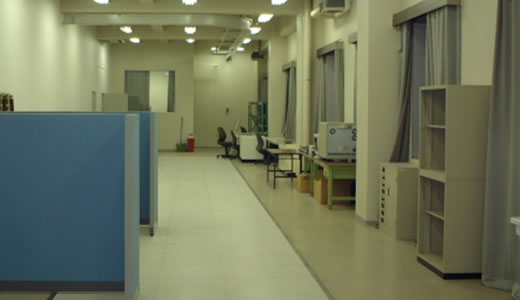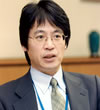Our research department was founded in January 2005 as the Brain Life Science Program (a part of the Program in Cell Information Medicine at the Graduate School of Medicine). I remember that there were no experiment benches nor wet lab facilities, but was very roomy with a high ceiling, because up until it was established, the laboratory allocated to us was for a linear acceleration analyzer of the Space Medical Research Center. Within about three months after I moved here, I set-up the laboratory and installed experiment benches, culture facilities, an animal holding facility, measuring apparatus, and other fundamental items. In April 2005, Assistant Professor Kenji Ono and our secretary, Mie Takahashi, were assigned to their positions, and we started research projects. At the beginning there were various inconveniences in carrying out research, however, our research was adopted by the NEDO large-scale project in July 2005, which enabled us to introduce a large part of the special equipments which we currently have. In April 2006, in line with the reorganization of the research institute, the name of our group was changed to Department of Brain Functions. In March 2009, Hiromi Suzuki was assigned as another Assistant Professor, which finally allowed us to commit to our research activities with a full staff of three people.

The Central Laboratory (N101) in January 2005
In our research projects, we develop a new drug delivery system which targets the brain, new imaging technology, and single cellular separation assay technology to elucidate the expression of brain functions in terms of morphology and cell structure, and to evaluate the mechanisms of expression of high-level brain functions such as memory and emotion, at the genetic, cellular, and organism levels. In addition, we are working on developing techniques with which we can artificially control such functions. Our aim is to apply this research to develop comprehensive therapies and diagnostic methods for brain disorders and to discover new drugs.
We have been working closely with industry, and, based on our experience, we are fully aware of the importance of basic research in medicine. It is true that basic medical research is the basis of modern medicine, however, at the same time, it is those who are involved in medical treatment who should decide the orientation of how to apply research results in the clinic. We would like to continue our research, with the aim of maintaining a balance between clinical and research aspects.

Makoto Sawada February 2011













